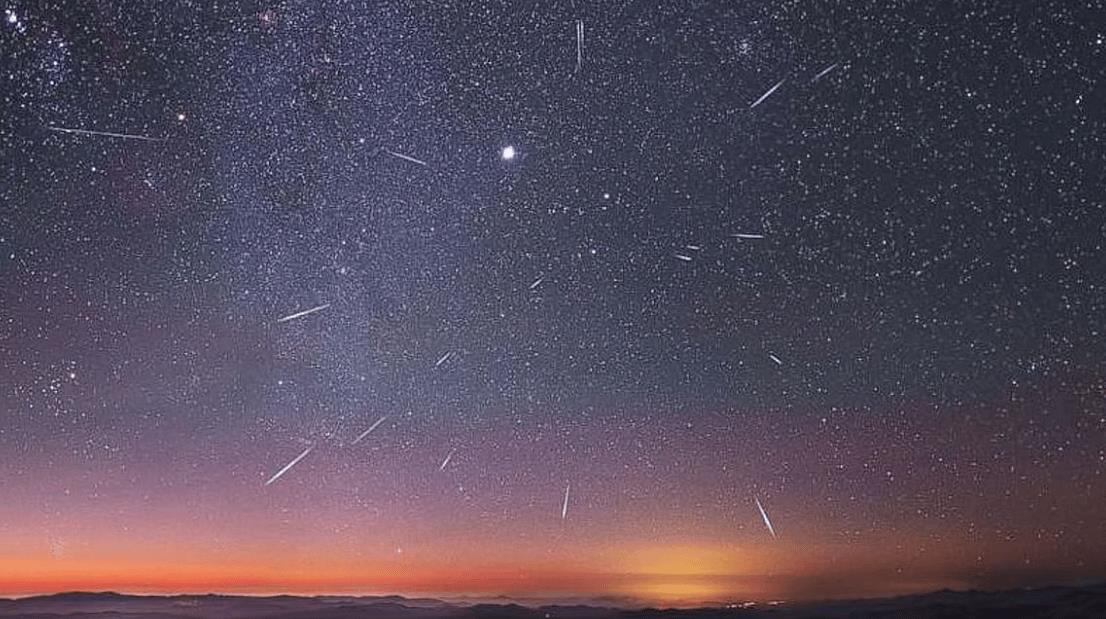UAE skies are no stranger to drones, fireworks, and high-tech displays. But from time to time, the country's residents also get to enjoy spectacular light shows put on by Nature herself - in the form of meteor showers - and watch as Earth's only satellite also turns into a visual treat. This month, expect both.
You can look forward to a 'Pink' Moon on April 13, rising at approximately 7.08pm, and setting at 5.56am the following morning.

Unlike some lunar spectacles named after colours , the moon will not actually turn pink. The Pink Moon is the traditional name for the April full moon, originating from Native American traditions. It refers to the first full moon of spring, named after the blooming of pink wildflowers, among the first to blossom in spring in North America.
Stay up to date with the latest news. Follow KT on WhatsApp Channels. This year, the Pink Moon is also a micromoon, which means the moon is near its farthest point from Earth (apogee), making it appear slightly smaller and dimmer.
After the Pink Moon, residents will not have to wait long for the next visual spectacle - the Lyrid meteor shower - expected right around the corner from April 21 to 22. Residents can observe the stunning astronomical phenomenon in a region away from city lights, including deserts or mountainous regions such as Al Qudra, Al Quaa Desert, Jebel Jais, Jebel Hafeet, or Al Razeen desert. Unlike the Quadrantids meteor shower in January this year, boasting hundreds of light streaks, this one will produce 10 to 20 meteors per hour and is best seen from 2am to 5am.
But how do meteor showers occur? And why are so many of them seen in the latter half of the year? All the meteors seen in the sky during a shower radiate from a common point, like a comet or asteroid, according to Eng. Rami Alkhatib, member of International Astronomical Center. A comet leaves behind a trail of debris, and when these tiny, pebble-sized particles hit Earth's atmosphere, they burn up, Alkhatib explained.
In fact, the light streaks that we see today occurs due to the burning up of ice, rock, or even metal left over from the formation of our solar system about 4.6 billion years ago. While the Leonids in 902 AD is one of the first recorded meteor showers, observed by Chinese astronomers, the Leonids of 1833 is often cited as the first widely observed and documented meteor storm.
This shower saw thousands of meteors per hour across North America, sparking scientific interest and leading it to be considered an astronomical phenomenon. Today, while meteor showers occur year-round, the richest season for meteor activity is winter, especially in the Northern Hemisphere, where UAE is located. Winter includes multiple major showers, including the Geminids, Quadrantids, and several minor ones.
It is an active season due to our planet's orbital position, but also a time when Earth goes through more comet debris, Al Hariri said. Also, the skies tend to be clearer and longer, which aid in observation. To watch meteor showers, it is essential to allow your eyes around 30 minutes to adjust to the dark, according to Khadijah Al Hariri, Operations Manager at Dubai Astronomy Group (DAG).
In order to preserve your night vision, it is also advisable to avoid looking at phone screens and other bright lights, she added. Since "a bright moon can wash out meteors", showers are best observed in a new moon phase, Al Hariri added. In addition to precautions related to vision, it is necessary to dress warmly, carry basic supplies, and inform someone of your location if going to remote areas, Alkhatib said.
Do you need telescopes or binoculars? No, because the meteors move too fast to be observed properly through equipment, according to Al Hariri. You have a better chance of catching the show with the naked eye. The upcoming meteor showers are: MENAFN10042025000049011007ID1109417117 Legal Disclaimer: MENAFN provides the information “as is” without warranty of any kind.
We do not accept any responsibility or liability for the accuracy, content, images, videos, licenses, completeness, legality, or reliability of the information contained in this article. If you have any complaints or copyright issues related to this article, kindly contact the provider above..
Technology

UAE: Why Pink Moon Will Look 'Micro' This April How To Watch Meteor Shower Light Up Skies

(MENAFN - Khaleej Times) UAE skies are no stranger to drones, fireworks, and high-tech displays. But from time to time, the country's residents also get to enjoy spectacular light shows put on by ...















